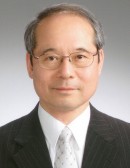

Plenary Lecture
Reversible Canalicular Mrp2 Localization Induced by Intracellular Redox Status

Professor Toshiharu Horie
Laboratory of Biopharmaceutics
Graduate School of Pharmaceutical Sciences
Chiba University
Japan
E-mail: horieto@p.chiba-u.ac.jp
Abstract: Multidrug resistance-associated protein 2 (MRP2/ABCC2) and bile-salt export pump (BSEP/ABCB11) are involved in the formation of bile-salt-independent and -dependent bile flow, respectively. MRP2 is expressed statically on the canalicular surface, but MRP2 dynamic insertion and internalization processes are also important, because the steady-state expression level of MRP2 is directly dependent on its turnover rate. The disruption of these turnover rates is suggested to lead to cholestatic jaundice. Disrupted canalicular localization of MRP2 has been observed in patients with chronic cholestatic disorder and hepatic failure, i.e., primary biliary cirrhosis (PBC) and hepatitis C virus (HCV) infection. Oxidative stress markers were also closely correlated in these chronic liver failure patients. These observations suggest that both mRNA expression of canalicular transporters and their localization are equally important in human liver failure. We have shown that Mrp2 internalization is observed when acute oxidative stress is induced in rat livers. Mrp2 localization returns to the canalicular membrane after replenishment of intracellular glutathione (GSH). Microtubule polymerization and protein kinase A (PKA) are essential factors in the Mrp2 sorting process, which suggests that the balance between PKC activation and PKA activation is a key regulation targets of reversible Mrp2 trafficking. On the other hand, radixin is required for the canalicular localization of Mrp2. A change in the phosphorylation status of radixin reversibly regulates the protein interaction between the phosphorylated radixin (p-radixin) and Mrp2, and the redox-sensitive canalicular localization of Mrp2.
Brief Biography of the Speaker: Toshiharu Horie graduated from the University of Tokyo, Faculty of Pharmaceutical Sciences in 1972. After he graduated from its Graduate School of Pharmaceutical Sciences, he got a position of an assistant professor in Tokyo University of Pharmacy and Life Sciences, and then, became an associate professor in 1992. He moved to Chiba University, Faculty of Pharmaceutical Sciences as a professor in 1994 and became a professor of Chiba University, Graduate School of Pharmaceutical Sciences in 2001. His research area is biopharmaceutics and drug toxicity.